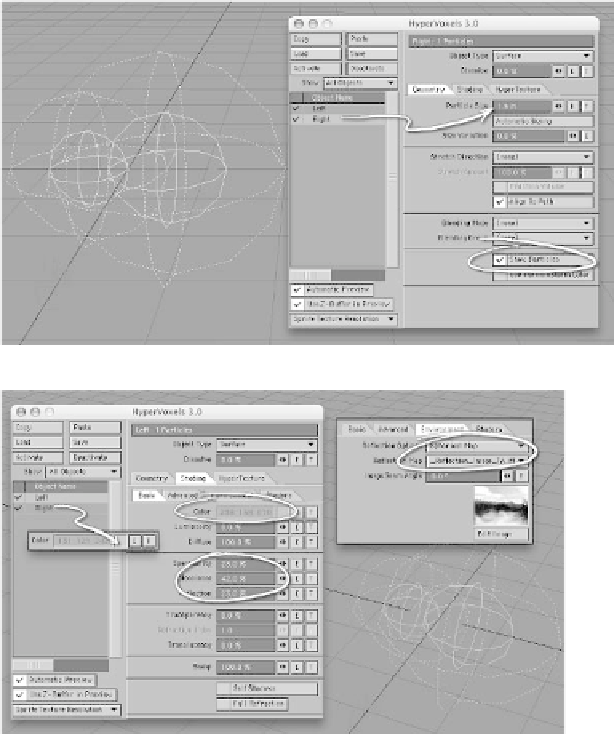Graphics Programs Reference
In-Depth Information
1.
Start with a fresh, clean scene, and add
two null objects. Name the first one
you create
Left
, and move it numeri-
cally to
X=-.5 m
. Name the second
one
Right
, and move it numerically to
X=.5 m
. Move the camera numerically
to
Z=-3 m
.
this in a bit. The solid, inner line shows
where the core of the HyperVoxel sur-
face is. (See Figure 18-16.)
3.
Under the Shading tab, you'll see
another set of tabs almost identical to
the tabs under the Surface Editor. Set
the Color for the Left null to
238
,
158
,
70
and the Right null to
131
,
121
,
242
.
Set
both
nulls to have Specularity of
23%
, Glossiness of
42%
, and Reflec-
tion of
23%
. Set
both
nulls to have
Spherical Map
for their Reflection
Options and
Images\_Reflection_
Image_TA.iff
as their Reflection Map.
(See Figure 18-17.)
2.
Open the HyperVoxels interface, and
activate both nulls. For the Right null,
set its Particle Size to
1.5 m
(the Left
null should stay at 1 m). Check
Show
Particles
for both nulls, and you will
see representations of them in Layout.
The outer, dashed line represents the
extent of their “influence” — more on
Figure 18-16
Figure 18-17





